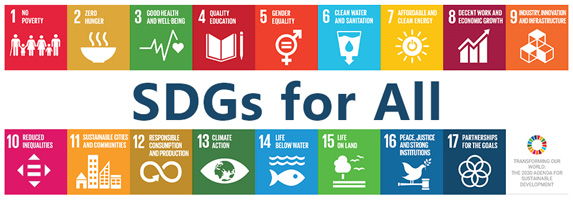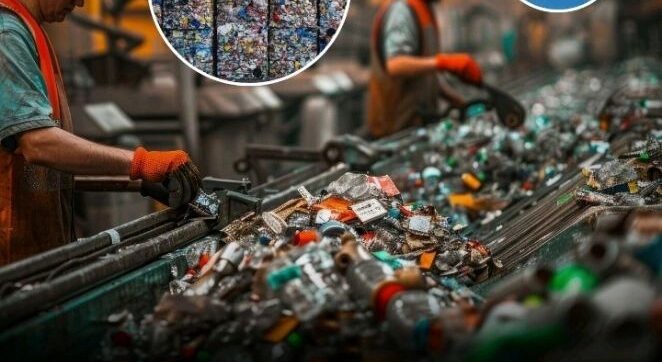By Dr.Arif Kisana
Stockholm (London Post) – Sweden stands as a global exemplar in the transition to a circular economy, transforming waste into a resource and setting a benchmark for sustainable waste management that offers critical lessons for Europe and beyond. With a population of 10.5 million and a GDP of €540.7 billion in 2023, Sweden accounts for just 2.4% of the EU27 population and 3.2% of its GDP, yet its influence on environmental policy and innovation is disproportionate. The country’s 99.3% recycling rate for household waste, with less than 0.4% landfilled, starkly contrasts with the global average of 60% landfilled waste and the EU’s 23%. This success, driven by stringent policies, advanced infrastructure, and cultural commitment, positions Sweden as a leader in waste reduction, though its circularity rate of 3.4%—compared to the EU’s 11.8% or the Netherlands’ 24.5%—reveals gaps in material reuse.|TURKISH|JAPANESE|
Sweden generates 431 kg of municipal waste per capita annually, below the EU average of 513 kg. Austria (611 kg), Denmark (747 kg), and Luxembourg (790 kg) produce more, while Romania (280 kg) and Latvia (357 kg) generate less. In 2023, Sweden managed 4.1 million tonnes of municipal waste, with 39% recycled and 59% converted to energy through 34 waste-to-energy (WTE) plants. These facilities generate heat for 1.5 million households and electricity for 780,000 homes, reducing CO2 emissions by 2.2 million tonnes annually, equivalent to removing 440,000 cars from the road. Denmark and Finland also utilize WTE, but the UK (44% recycling rate) and Poland are only recently adopting it to curb landfill reliance, where Bulgaria and Malta landfill over 70%. Sweden’s landfill rate of 1% aligns with Germany, Austria, and Belgium, far below the EU’s 18% in 2020.
Sweden’s high resource consumption—266 million tonnes annually or 24.4 tonnes per capita, 171.7% of the EU27 average—underscores the need for circularity. The Circularity Gap Report Sweden suggests six interventions to cut material use by 42.6%: circular construction, sustainable food systems, circular manufacturing, reformed extractive industries, clean mobility, and conscious consumables. For example, renovating buildings and using lightweight materials could reduce construction’s material footprint by 8.2%, while plant-based diets and reduced food waste could cut 7.3%. Manufacturing, 26% of Sweden’s economy, could lower its footprint by 5.3% through repair and rental services, and restricting mining could save 3.4%.
Sweden’s policy framework, rooted in the 1991 carbon tax (€120 per ton of CO2) and Extended Producer Responsibility (EPR) laws since 1994, drives circularity. EPR, covering 18 product categories, ensures producers manage collection and disposal, recycling 85% of packaging materials (1.2 million tonnes annually). Landfill bans on combustible and organic waste, coupled with high taxes, align with the EU’s goal of under 10% landfilling by 2035. A 2024 law mandates food waste separation, boosting biogas production, while the “pant” deposit-return scheme achieves a 92% redemption rate for 3 billion bottles and cans annually, surpassing Germany’s 77%. By 2027, waste management reforms will shift responsibility to producers and ban residual waste landfilling.
Infrastructure supports these policies, with recycling stations within 300 meters of homes and technologies like vacuum-based collection and Optibag sorting. Germany and the Netherlands have similar systems, but Romania and Greece lack them. Cultural engagement is key: public campaigns, education, and initiatives like Circular Monday—a counter to Black Friday—promote reuse. Municipal second-hand centers like ReTuna in Eskilstuna, attracting 700 daily visitors, mainstream repair and recycling. Industry plays a role too, with H&M targeting 100% recycled materials by 2025, Volvo designing 95% recyclable buses, and SSAB pioneering fossil-free steel. Textile recycler Syre, launched in 2024, aims to close the polyester loop by 2032. These efforts generate €2.1 billion annually from WTE and employ 200,000 in circular sectors, 4% of GDP in 2024, up from 1.8% in 2015.
Compared to peers, Sweden’s 49% municipal recycling rate trails Germany (69%), Austria (59%), and Slovenia (58%) but exceeds Romania (12%) and Greece (19%). The Netherlands’ 26.5% circularity rate highlights Sweden’s reliance on energy recovery over material reuse. France’s 2020 Anti-Waste Law and Italy’s 76% packaging recycling show progress, but their landfill rates (32% and higher in Italy’s south) lag. Poland’s 38% landfill rate reflects slow transitions. Sweden’s import of 1.8 million tonnes of waste annually, generating $100 million, raises concerns about global responsibility, as it may discourage waste reduction elsewhere. Critics also note WTE’s CO2 emissions and low plastics recycling, with much exported or incinerated. A 2024 tax cut on single-use plastic bags sparked debate over reversing environmental gains.
Sweden’s model offers four lessons: economic viability (WTE’s profitability), ambitious policies (2020 Waste Plan’s targets), hyper-local solutions (Malmö’s Eco-Cycle Town), and transparency about limitations (waste imports). For emerging economies, landfill bans, EPR, and monetized waste streams are priorities. Developed nations can adopt Sweden’s repair-friendly tax policies and deposit systems. The Swedish Environmental Protection Agency advocates exporting expertise to countries like Bulgaria. The circular economy employs 85,100 (1.7% of jobs), below the EU’s 2.1%, but resource productivity is rising. Innovations from RISE and RE:Source, plus tax reforms, drive progress, though vague timelines and EU waste law infractions pose challenges.
By doubling its circularity rate to 7.6%, Sweden could significantly cut its material footprint. Its blueprint—bold legislation, infrastructure investment, cultural buy-in, and economic incentives—shows circularity is an ecosystem, not just policy. As global waste is projected to rise 70% by 2050, Sweden’s transformation from landfill reliance in the 1970s to near-zero waste today proves societies can turn waste into an economic engine. For policymakers, businesses, and citizens, Sweden’s integration of regulations, technology, and social engagement offers a scalable path to a sustainable future.
This article is produced to you by London Post, in collaboration with INPS Japan and Soka Gakkai International, in consultative status with UN ECOSOC.
INPS Japan




